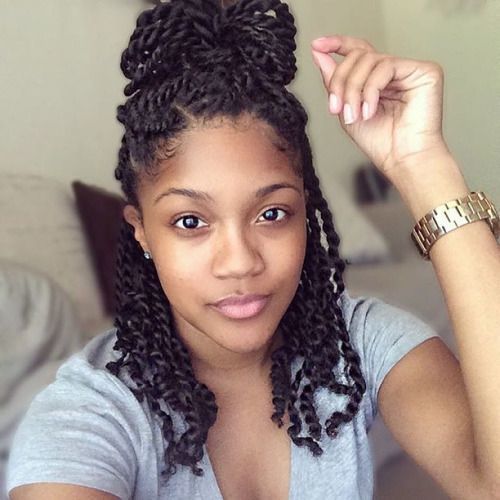How to DIY Senegalese Twists

https://www.instagram.com/p/BHF9BXrh9mW/
Need a new protective style? Going on vacation soon? Have no clue what you’re going to do?
A vacation style. A clutch protective style. A celeb fave. Check out how you can get these #Senegalesetwists #protectivestyle #naturalhair #bhs Click To TweetWell, help is here and it comes in the form of Senegalese Twist braids. Originating from West Africa, the style has been around for centuries. These hair twists are sometimes referred to as “rope twists” for their small and string-like appearance. Typically, Kanekalon hair is used to give a smooth look.
Installing the braids involves wrapping fiber extensions around the roots of natural hair. Then, the hair is twisted in two-strands from the root to the end of the hair shaft. Some of our favorite actresses like Gabrielle Union-Wade, Brandy and Joy Bryant have been spotted wearing these twists. You too can have this look. Even if you are cash strapped, and, you can do this in the comfort of your own home.
WHAT YOU WILL NEED
- Tail comb
- Small hair clips
- Six to seven packs of synthetic hair extensions (Kanekalon or Darling fiber or whatever your preference is)
- Saucepan and hot water
- Hair oil
- Spray bottle
- STEP ONE – wash and detangleWash, detangle and dry your hair before braiding. Avoid using thick conditioner or heavy oils on your hair as this will make hair slippery and these products can clog your follicles.Part your hair into sections. They should be equal in size for continuity. Tie these sections with small hair clips to keep hair away while you braid.
- STEP TWO – prepare extensionsPrepare extensions to desired size and length. Be sure to keep the same amount of extension hair for each strand. Lay the center of the fiber extension over your natural hair and begin to twist and coil them. Do this by grabbing your own hair and the fiber hair in between your fingers and twist to the right until it coils. Then, secure the extension hair before weaving it.
- STEP THREE – braid from the rootWhen braiding down from the root, overlap the right-hand section of hair with the left. Continue to twist and coil the hair until the hair is finished. The braid should be sturdy and stay in place without being sealed immediately.
- STEP FOUR – repeat
Continue steps two to three while working on each section. Once finished, dip in hot water and treat the ends with oil to lock moisture.
Maintenance of Senegalese Twists
- Wash your twists at least once a week. Use a diluted shampoo or apple cider vinegar.
- Apply light oil and spray moisturizer to your scalp several times a week. This helps seal in moisture and hydrates your hair. For help with products, check out this article.
- Spray liquid leave-in conditioner on your braids daily. Braid spray promotes optimal hair health.
- Sleep with a silk or satin scarf.
- Keep style for six to eight weeks.
Try this style and tell us how it worked for you…. And don’t forget to share with your friends.









